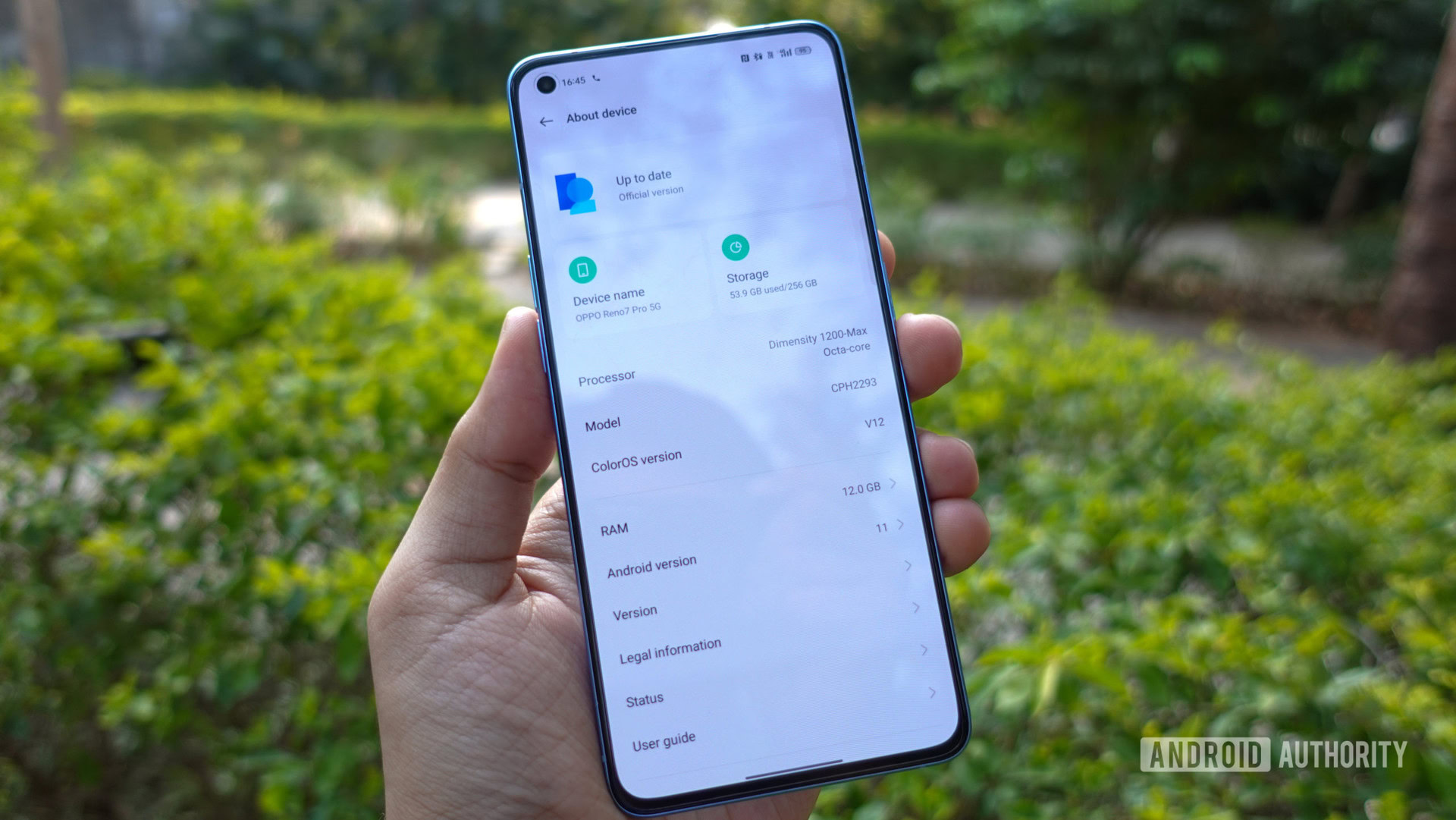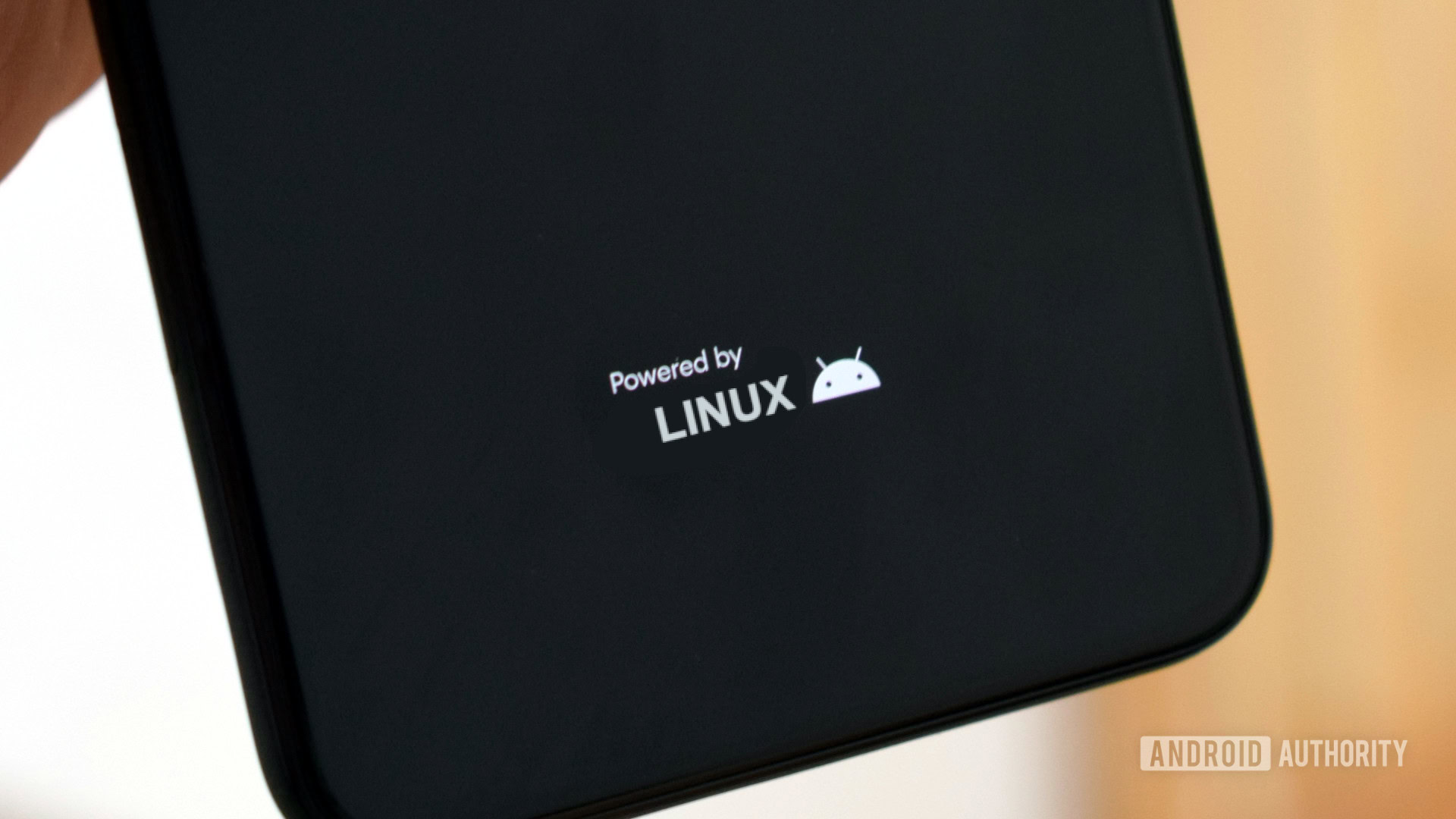Affiliate links on Android Authority may earn us a commission. Learn more.
Is Android really just Linux?
Is Android just Linux? This is one of those frustrating questions that seems like it should have a straightforward ‘yes’ or ‘no’ answer, even though you can install a Linux desktop on Android. Still, the Android and Linux communities have been debating this question for years.
So in this article, let’s clear up the confusion surrounding the different kinds of software someone may have in mind when they use the term ‘Linux’. After that, we’ll work through the arguments that inevitably creep in every time someone brings up this debate.
Is Android just Linux?
There are two factors that have made it particularly difficult to reach a definitive answer in this long-running debate:
- People regularly use the word “Linux” to refer to a number of related, but distinctly different things.
- There’s no universally accepted definition of what makes a piece of software Linux.
When someone says the word “Linux,” they may be referring to:
- The Linux kernel. This is a small, but essential part of an operating system. The kernel is responsible for interfacing with a device’s hardware, providing services to the rest of the system, and performing tasks such as managing the device’s CPU and memory. The Linux kernel, like any kernel, can only function as part of a wider operating system. It’s impossible to have an operating system that consists solely of a Linux kernel. Since Android is a complete operating system, we can immediately rule out classifying Android as a Linux kernel even if it relies on one.
- A Linux distribution, or distro. The term Linux is also commonly used to describe an operating system that contains the Linux kernel and additional software such as utilities, libraries, and a GUI. Many distros also bundle pre-installed applications such as web browsers, text editors, and music players. Even if this additional software was designed specifically to run on the Linux kernel, those are not a part of the Linux kernel. When discussing operating systems that use the Linux kernel, the terms ‘distribution,’ ‘distro’ and ‘operating system’ are interchangeable. Since anyone can take the Linux kernel, add their own software, and create a complete operating system, there are countless Linux distros currently available.
- GNU/Linux. The majority of Linux distributions are a combination of the Linux kernel plus GNU software, which has led a vocal minority to argue that we should all be referring to Linux as GNU/Linux. This is a whole other debate, so to help keep things simple I’ll be using the terms ‘Linux distribution’ and ‘distro’ throughout this article — just note that there’s a strong link between the Linux kernel and GNU software.
While there’s nowhere near as much confusion surrounding the term “Android,” there are still two distinct strains of the Android operating system.
The first is the Android Open Source Project (AOSP), which is maintained by Google but free to use by anybody. While it is possible to use this source code to build a functioning operating system that you can install on a smartphone or tablet, the end result will lack the functionality that most users expect from their Android experience. This includes Google Mobile Services (GMS). GMS includes Google apps and APIs that, for many users, have become a fundamental part of the Android experience. AOSP is open-source, but the experience that your typical end-user expects from Android isn’t provided by AOSP.
Your typical Android smartphone uses an AOSP base for its software, along with a significant amount of proprietary code from Google and the device manufacturer.
Most of the arguments for and against classifying Android as Linux apply to both interpretations of Android, but there are a few instances where the answer differs, depending on whether you define Android as AOSP, or as the operating system that ships on your typical Android smartphone or tablet.
The argument for why Android is Linux

There’s really only one argument in favor of classifying Android as Linux, but it’s a strong one: every Android smartphone or tablet contains a Linux kernel. You can even see what version of the kernel is installed on your device, by opening its ‘Settings’ app and navigating to About Device > Software info.
Android runs the Linux kernel, but doesn't have everything else you'd expect from a Linux distro.
However, Android isn’t just the Linux kernel; it’s a fully-functioning operating system that features lots of additional libraries, a GUI, apps, and much more. So when we ask “is Android Linux,” we’re actually asking “is Android a Linux distro?”
Since it’s impossible to even estimate how many Linux distros are out there, it’s very difficult to put together a list of rules about what makes an operating system a Linux distro. You’ll find many different implementations out there, from conventional Linux distros like Ubuntu or Arch Linux to heavily-customized ones like SteamOS on the Steam Deck.
Beyond the presence of the Linux kernel, the definition of a Linux distro is pretty open to interpretation. So in the rest of this article, let’s look at the arguments people most commonly put forward when arguing against classifying Android as a Linux distribution.
No, the Android kernel isn’t the same as the one used in Linux computers. The former needs a lot of features that aren’t supported in the standard Linux kernel.
Why some argue that Android isn’t Linux
Based on everything we’ve discussed so far, it’s clear that Android does have at least the foundational aspects of Linux squared away. Whether those aspects are enough to say that Android is definitively Linux is a matter of personal belief.
So what about the flip side? Is there an argument to be made for why Android isn’t Linux? Yes, but not all of them necessarily hold any merit. Here are a few arguments people bring up against calling Android Linux. We’ll also discuss whether or not each one makes sense in the context of other Linux distros.
Argument 1: Android doesn’t use the standard Linux kernel
In order to create an operating system that meets the unique needs of mobile devices, the Android team made a number of changes to the Linux kernel. That includes the addition of specialized libraries, APIs, and tools that are mostly BSD-derived or written from scratch, specifically for Android.
Since the argument in favor of classifying Android as a Linux distro hinges on the fact that Android uses the Linux kernel, this point might seem like it’s the end of the argument, but it’s not that unusual for a Linux distro to make changes to the kernel.
You see, the Linux kernel is released under the GNU General Public License, so anyone is free to modify its source code, which many Linux distros have done. When it comes to the question of just how drastically the Android team modified the Linux kernel, the Embedded Linux wiki concludes that the amount of changes implemented by the Android team “is not extremely large, and is on the order of changes that are customarily made to the Linux kernel by embedded developers.”
Verdict: A weak argument overall
Argument 2: Android doesn’t include all GNU software and libraries
Some Linux users believe that GNU software is a defining characteristic of a Linux distro, to the point where we should all be referring to Linux distros as GNU/Linux. From that perspective, there’s no way that Android can be a Linux distro. Android includes very little GNU software. Most notably, the Android team developed a customized C library called Bionic, rather than using the GNU C Library.
That said, there are a handful of Linux distros that develop their own alternatives to GNU software. Does that make them ineligible for the Linux moniker? We don’t think so and neither does the majority of the Linux community. This means it’s yet another argument that may or may not hold any water depending on whom you ask.
Verdict: It depends on whom you ask in the Linux community, but we have plenty of modern distros that don’t rely on GNU software too.
Argument 3: Mixed cross-compatibility between Android and Linux
Besides the kernel, Android has very little in common with other Linux distros. It’s also not explicitly designed to run regular Linux apps. One could argue that enterprising developers have found ways to run bog-standard Linux apps on Android. For example, you can run a terminal emulator app like Termux to get access to a Linux command line. Apps like UserLAnd and Andronix go one step further, allowing you to install a full desktop on Android using an operation known as chroot.
However, none of these options are easily exposed to the end-user and required the developers to use a fair number of workarounds to make them work, making it clear that Android isn’t intended to be used for the sole purpose of running Linux apps.
Running Android apps on a different OS also requires Android-specific libraries, a runtime, plus a range of other software that’s found only in the Android OS. So by default, you cannot run Android apps on any platform other than Android. For example, running Android apps on Windows 11 first requires you to install a subsystem. And even though Google has managed to run Android apps on Chrome OS, it entailed just as many changes to the mainline Linux kernel.
Verdict: A mostly valid argument if your definition of Linux encompasses universal app compatibility without workarounds.
In most cases, you cannot simply replace Android with a standard Linux installation. However, some apps use chroot to let you start a Linux desktop on Android and run traditional desktop apps. Some developers may also port full-fledged conventional Linux distributions like Ubuntu to certain Android phones.
Argument 4: Google controls Android’s development

Google may make the base Android source code publicly available via AOSP, but Google develops the next release of AOSP privately. In fact, the AOSP website clearly states that “Google retains responsibility for the strategic direction of Android as a platform and a product. In addition, although non-Google employees can contribute to AOSP in various capacities, the AOSP website makes it very clear that project leads are usually Google employees.
As a counterpoint, however, some Linux distributions do have strong links to a particular company (Canonical and Ubuntu immediately spring to mind). Does that mean Ubuntu is not a Linux distro? Of course not, so it doesn’t necessarily disqualify Android either.
Verdict: Android’s Linux status doesn’t change because of Google’s sole contribution to its codebase, even if that’s not a traditional practice for distros.
Argument 5: Android’s ‘open source’ status is up for debate
Despite the Free Software Foundation’s recommendation that developers remove all proprietary software from their Linux distributions, there’s no strict rule that states Linux distributions cannot include proprietary software. So in reality, many distros include vendor-compiled binary drivers, also known as binary blobs, so really the question is: how open is Android, compared to your ‘typical’ Linux distro?
The good news is that while many open-source enthusiasts would agree that AOSP is far from an ideal open-source project, its code is freely available for other people to modify and distribute.
However, by the time the AOSP base reaches the Android user, a lot of proprietary code has been added. This is true regardless of whether you opt for stock Android or a device that features manufacturer modifications.
By the time an Android device reaches retail shelves, a lot of proprietary code has been added.
While this doesn’t necessarily disqualify Android from being labeled as a Linux distribution, it’s worth noting that much of the code that users can see and interact with is proprietary. We’ve already discussed Google Mobile Services, but other manufacturer-specific modifications exist too, like Samsung’s One UI skin.
Although many Linux distros do include proprietary code, for many people the term ‘Linux’ has a strong association with open source software, and all of that user-facing proprietary code does tend to make Android feel much more closed than your typical Linux distro. You can’t get rid of these additions easily either. SteamOS, a Linux distro with a bunch of bundled proprietary software, allows you to access a traditional Linux environment rather easily.
Verdict: An argument that holds some water. It would label Android as “based on Linux” rather than equating the two.
Argument 6: Android restricts root access
While it’s typically pretty easy to modify a Linux distribution at the operating system level, by default Android owners cannot access the underlying operating system on their smartphone or tablet, and sensitive partitions are locked down tight. However, by default is key here. You can gain access to areas of your device that are normally closed off, through a process known as rooting.
Getting root user access on a typical Linux distribution doesn’t take nearly as much effort as on the vast majority of Android devices. On a standard Linux install, for example, getting root access is as simple as setting a password for the root user and logging into the account.
On Android, some manufacturers don’t allow you to access the root user at all, even if you’re willing to put up with the supposed risks. Xiaomi imposes a seven-day waiting period before you can unlock the bootloader, which is generally a key step to achieving root access. Many other manufacturers don’t issue the keys at all, meaning you can never fully unlock the device’s full potential.
Still, while Android is considerably less customizable than your typical Linux distribution, there are usually ways to gain access to the underlying operating system.
Verdict: The lack of root access doesn’t mean that Android isn’t based on Linux, but it’s certainly unconventional. So from that perspective, one could argue that Android doesn’t match Linux’s open philosophy.
So does Android resemble a Linux distro after all?

Let’s circle back to our original question: Is Android a Linux distribution? Ultimately (and frustratingly) it all hinges on how you define a Linux distro.
If you define it as an operating system that includes the Linux kernel, then Android is clearly a variant of Linux. Android is an unusual, highly-specialized variant of Linux, but it’s still got a lot in common with Ubuntu, Fedora, Debian, and any other operating system that’s based on the Linux kernel.
Still, the downsides of Android vs. conventional Linux distros are clear. Android has mixed native compatibility with regular Linux apps. It also requires many workarounds to get an X session or desktop up and running. And even though AOSP is open source, the version of Android you encounter on commercial devices feels considerably more closed than you’d expect from a Linux distro, thanks to the inclusion of user-facing proprietary code.
As a compromise, we can at least say that Android is based on Linux. However, it’s nearly impossible to definitively conclude one way or another as that would require the entire Linux community itself to form a consensus.